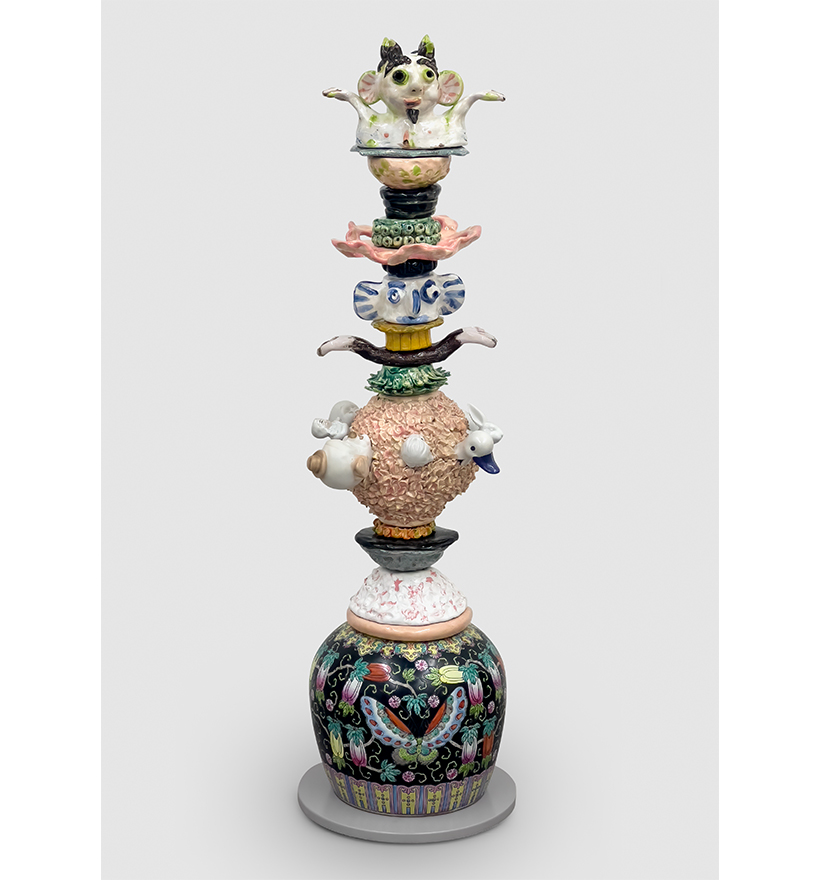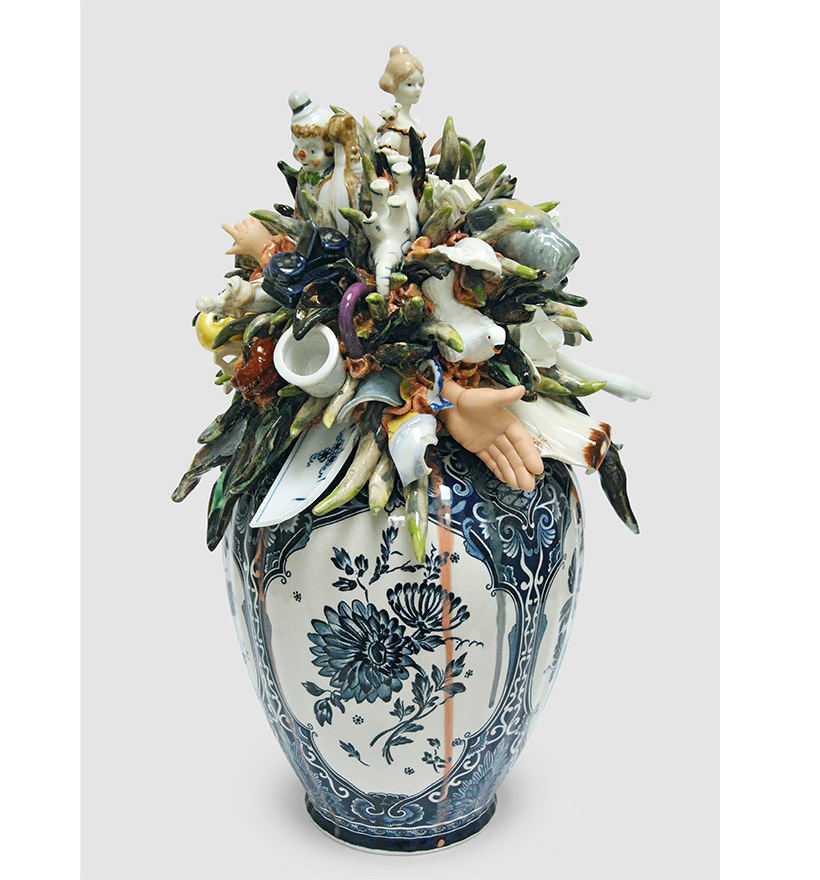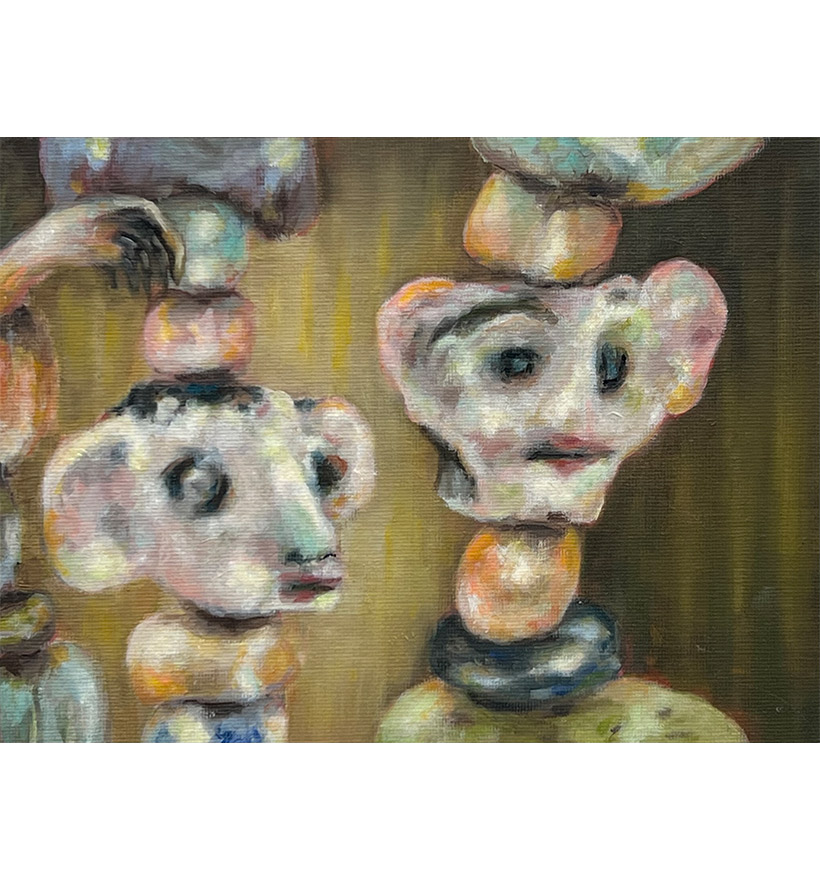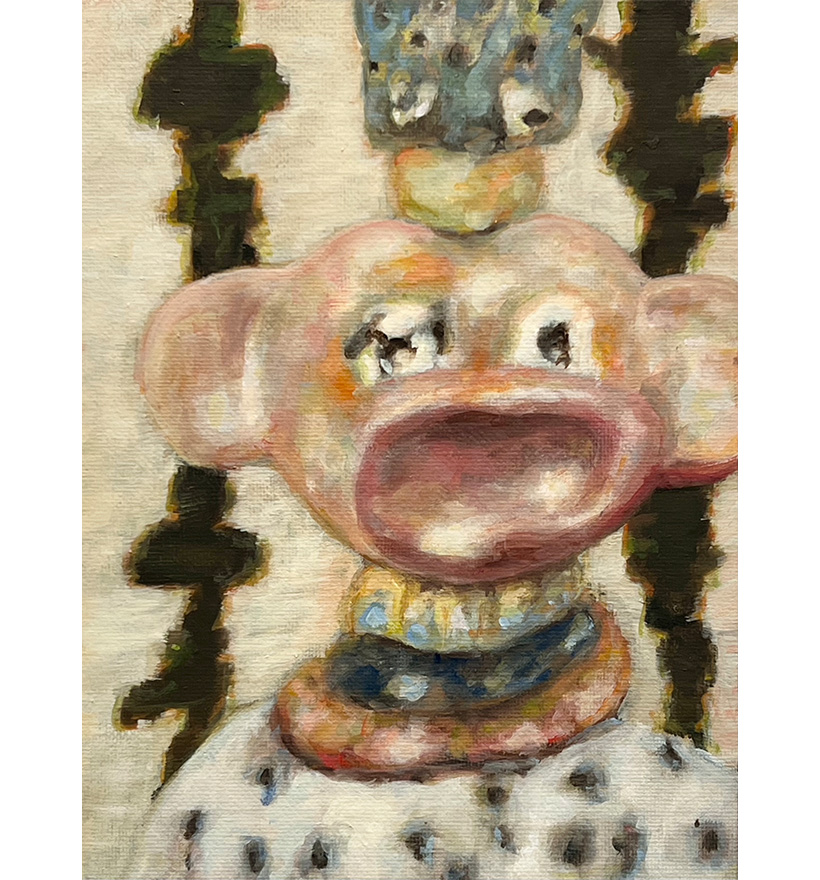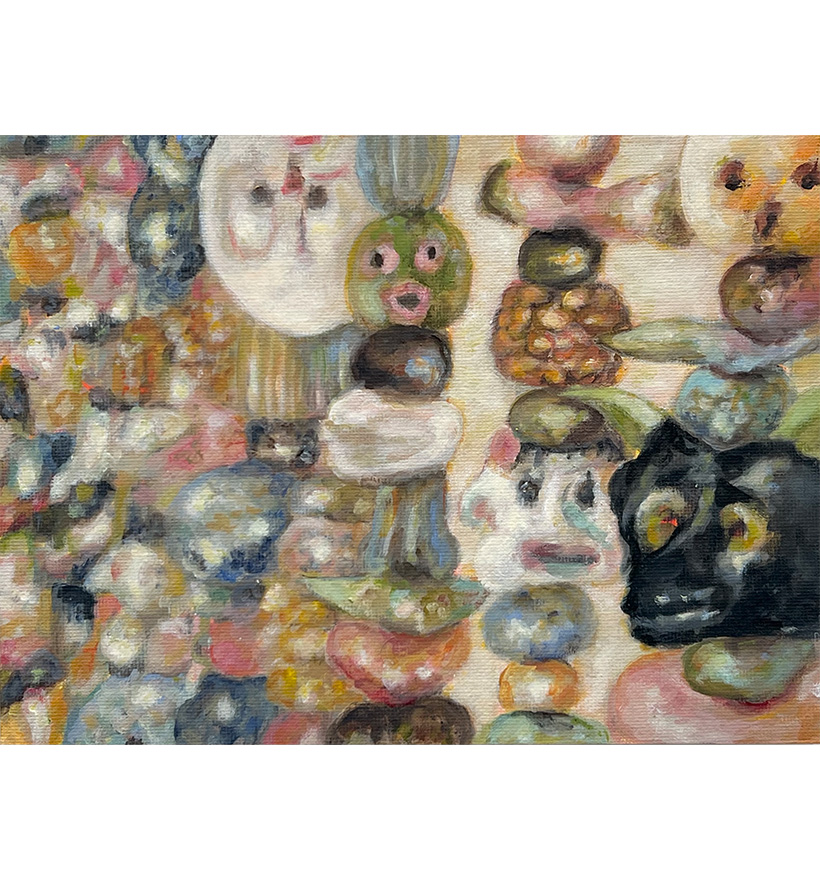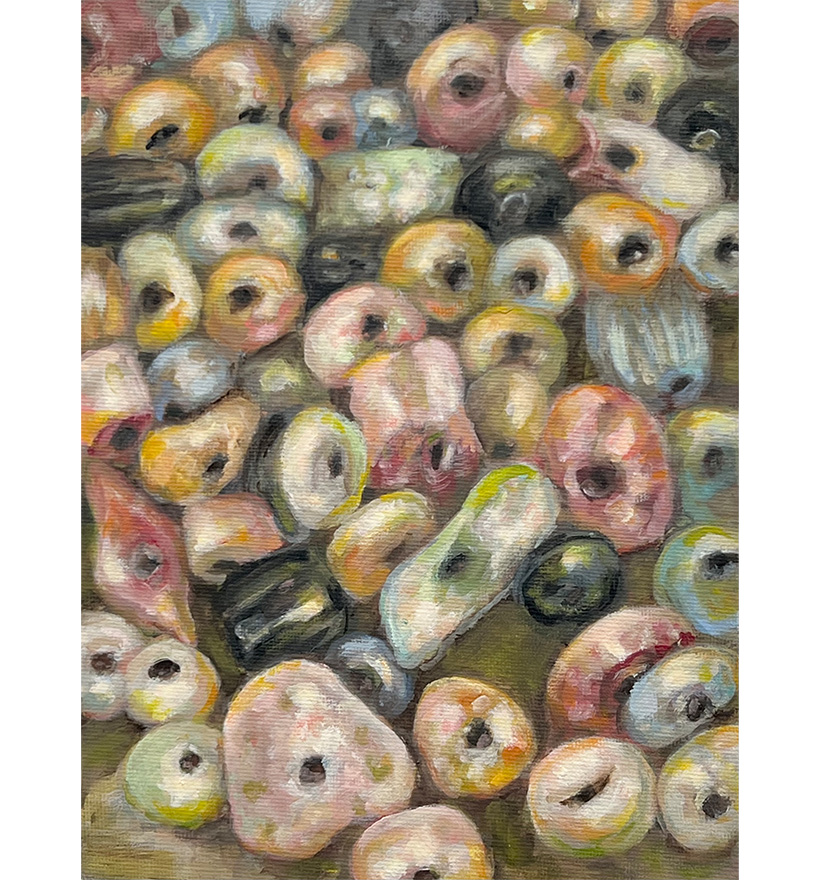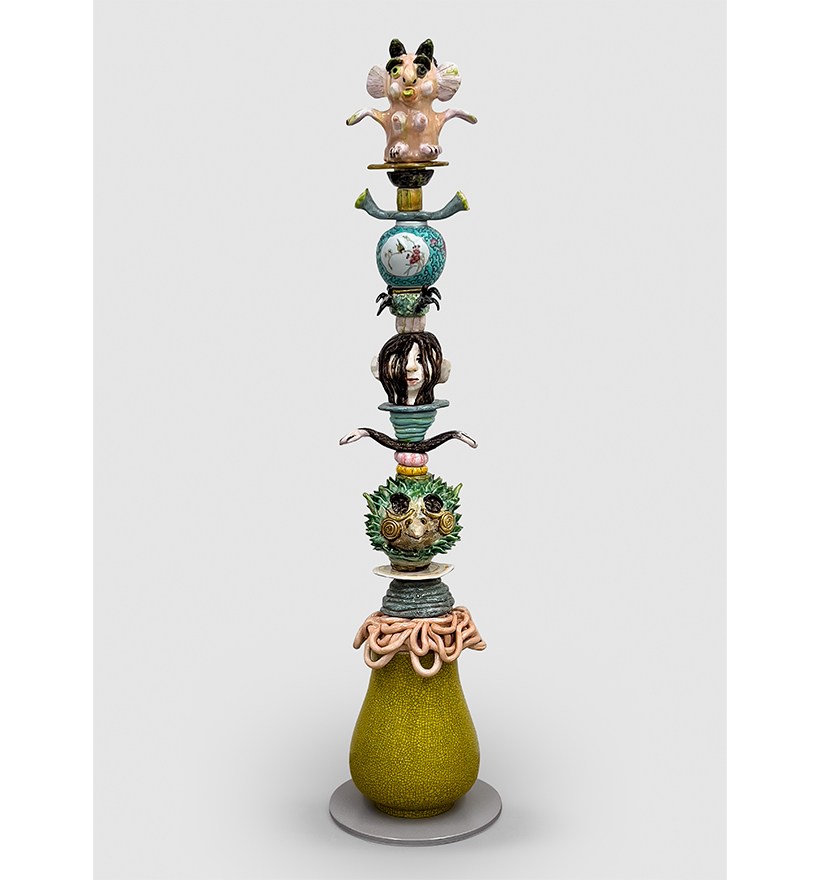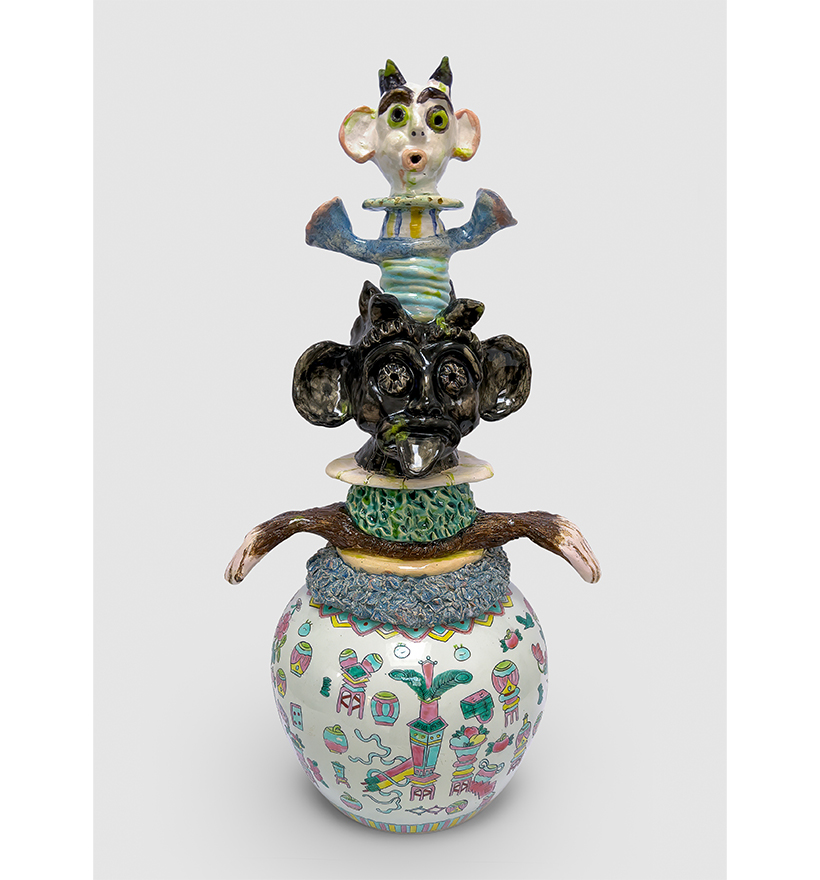Beate Höing
Coesfeld, Germany, 1966
The painter and ceramist-sculptor Beate Höing (b. 1966, lives and works in Coesfeld and Münster) creates works of art whose aesthetics are deeply influenced by the ornamentation and manual techniques of folk art. Drawing inspiration for her motifs from souvenir culture, but also from fairy tales and myths, she unfolds her growing imagination in works defined by an unmistakable style and unique charm.
More about the artist
In her porcelain objects, Beate Höing ironically recreates the world of her paintings, which she composes from flea market finds and her handmade pieces. She combines her own figures with partly kitsch and partly pretentious second-hand porcelain figures, giving the found objects a new narrative content. The consciously imperfect figures, whose effect is always somewhat improvised and peculiar, symbolise the tenuousness and vulnerability of the cosy world they (and the paintings) reflect.
Thus Beate Höing offers the viewer a humorous insight into a small world which, with its privacy and intimacy, can sometimes mean more to us than liberal sophistication by recalling a cosy existence that arouses nostalgia and memories of times past, but which has been functioning less and less ever since. the generation forced into it is gradually disappearing.
Dr. Gundula Caspary (Siegburg City Museum)
